Pure Storage FlashBlade//S Rear FIOM-1000
Moving to the rear of the chassis, there are a few main components. There are two FIOM-1000s for redundant fabric connectivity and then the power supplies.
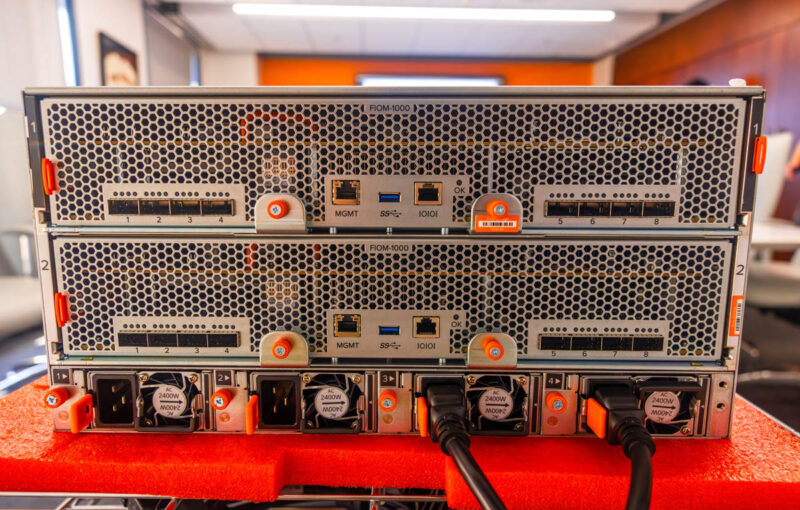
We, of course, pulled out the hot-swappable FIOM-1000 from the chassis.
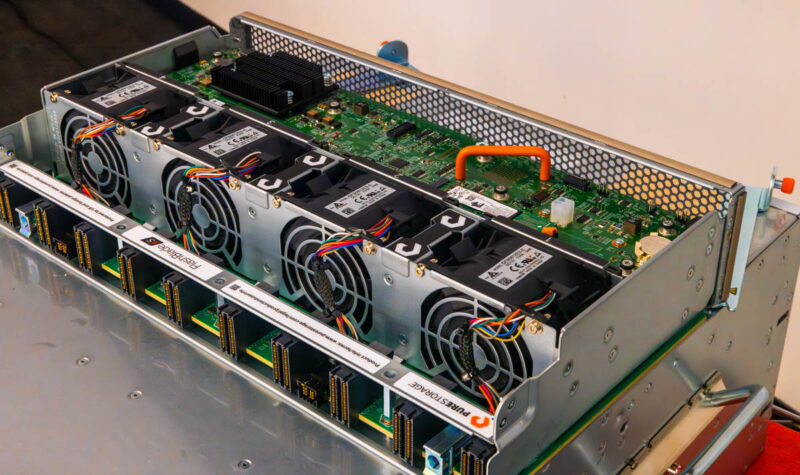
Here, we can see the view of one of the FIOM-1000 modules from the midplane view towards the rear.
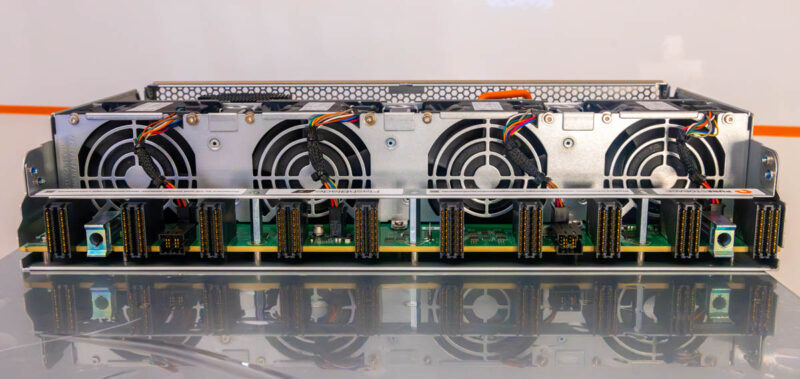
Each FIOM-1000 has four fan modules and high-density connectors.
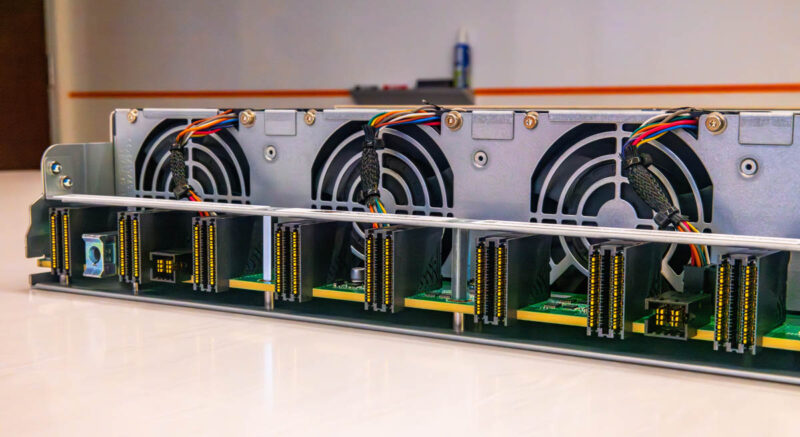
One small but fun feature is that each fan module has slats that close if the fan module is not pushing air. This prevents backflow through a failed fan and was a neat feature to find.
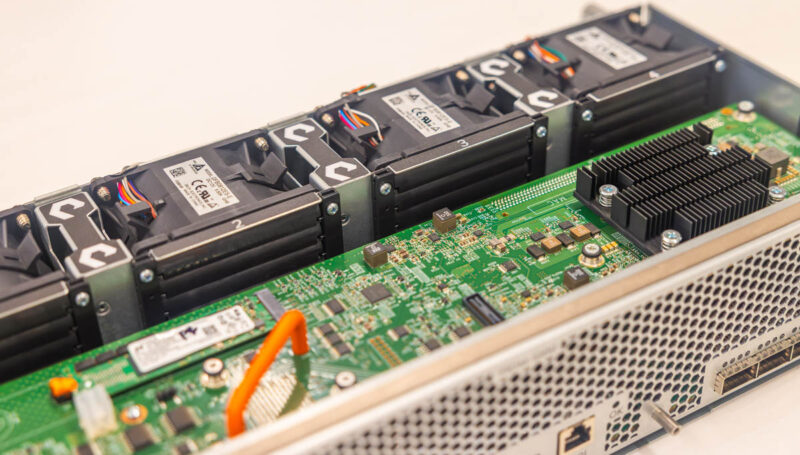
The FlashBlade//S is currently a 100GbE solution, but these are designed to be upgraded in the future. Still, there are some fun features on the fabric modules.
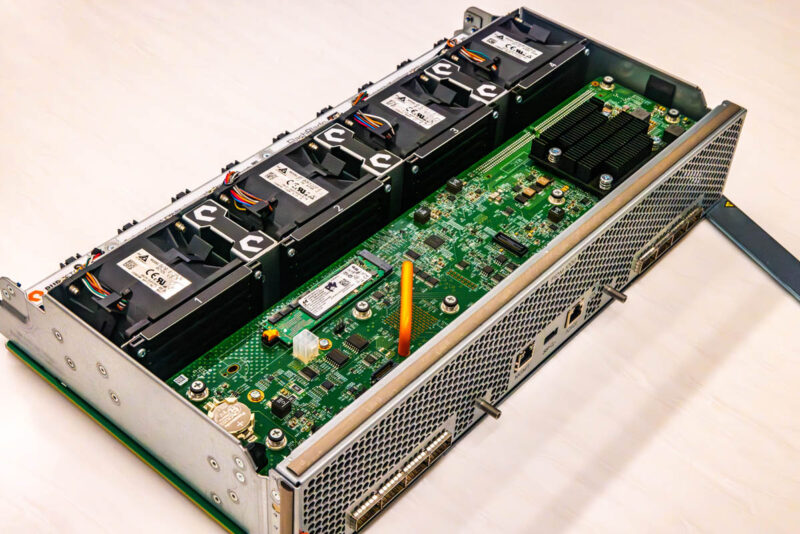
Another fun feature is that technically, one can say that the FlashBlade//S has traditional SSDs and slow ones at that. We spotted a Micron 5400 240GB boot SSD. In a 100GbE high-performance flash array with custom DFMs, we did not expect to see a M.2 SATA SSD, and yet, here is one. While some may think this is archaic, SATA boot SSDs are usually a step up from things like SATA DOMs for boot media.

Looking at the rear of the FIOM-1000, we can see the features we would expect for connectivity.
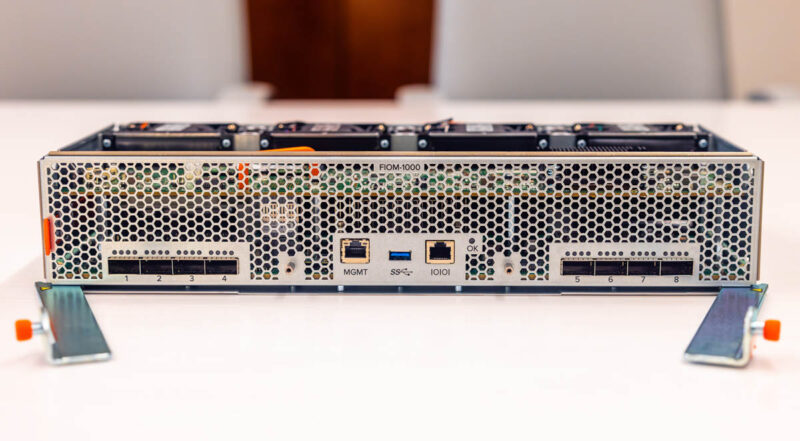
In the middle of the FIOM-1000, we have an out-of-band management port, a USB port, and a serial console port.
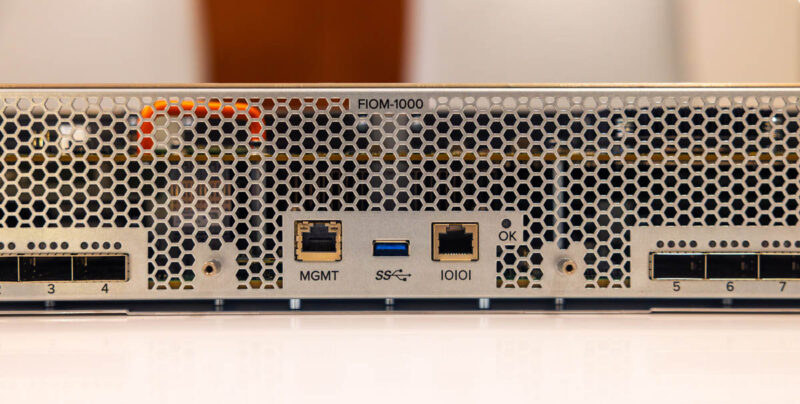
There are also eight QSFP28 connectors for 100GbE.
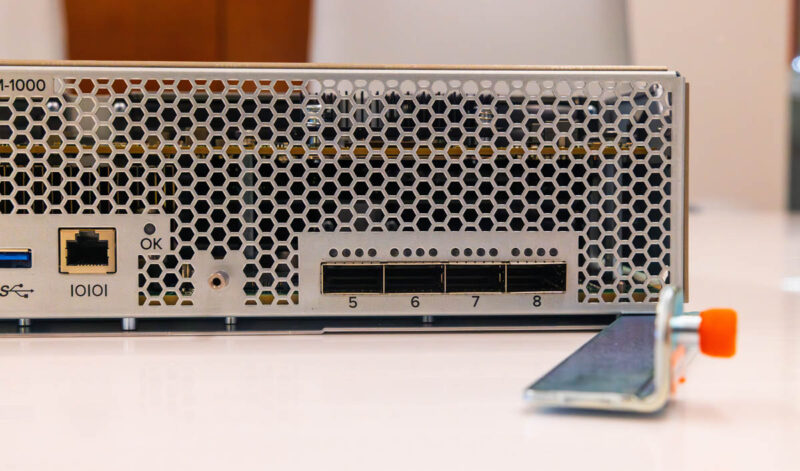
Both of the FIOM-1000 modules are plugged into the chassis. As with the fans, there are flaps to prevent backflow in the event a FIOM is being serviced. That left us without the ability to show you what the FIOM plugs into.
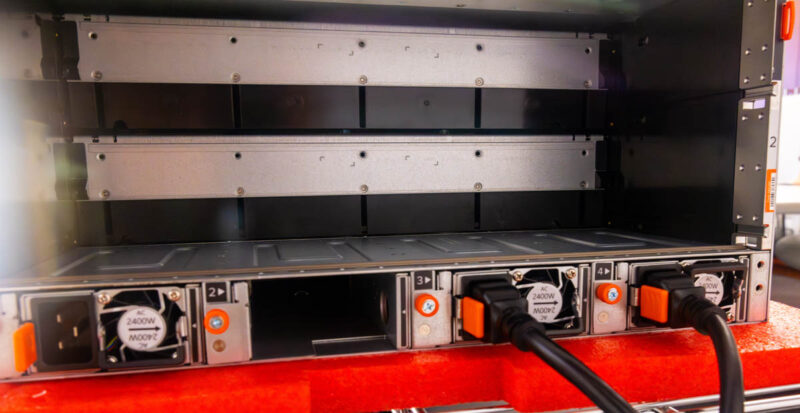
Luckily, with some portable lights and assistance from a Canon RF 50mm f/1.8 lens, we could hold open the flaps to show you the midplane.
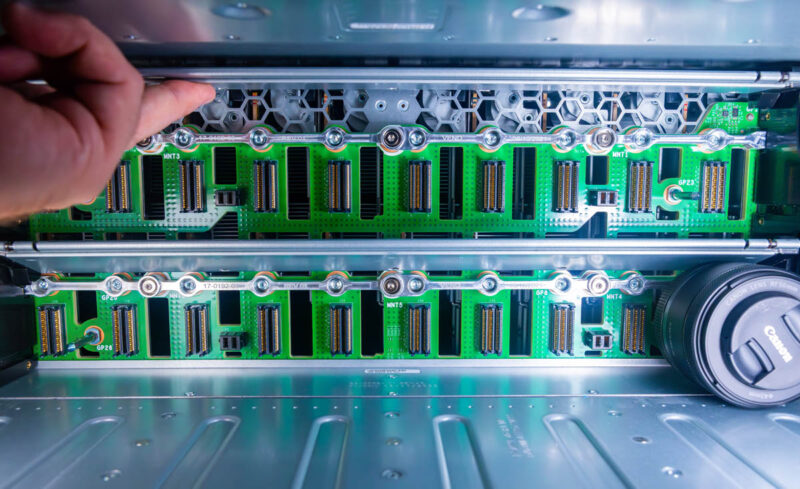
Rounding out the system, we have four 2.4kW 80Plus Platinum power supplies.
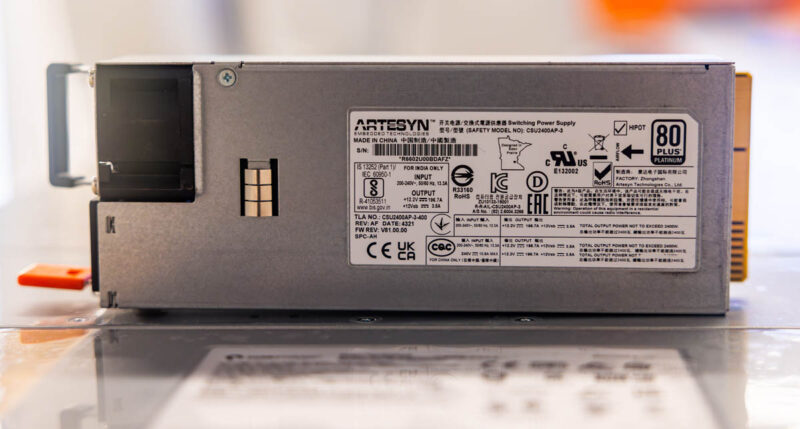
Hopefully, Pure Storage finds 80Plus Titanium units to eek out slightly better power efficiency in a future update. Four of these 2.4kW power supplies are used for redundancy.
Final Words
Hopefully, folks found this to be a fun look at the Pure Storage FlashBlade//S. As one might imagine, the power of these systems is not in just the Intel Xeon blade that sits within. Instead, Pure Storage’s Purity management solution can manage and orchestrate data storage and movement through the entire system, spanning from just a few blades in a single chassis to many chassis in a cluster. The company needs this custom design because it is managing the NAND flash at a global level instead of small individual SSDs using their own local controllers. That global management is how these arrays can get performance and endurance from QLC NAND. Or perhaps strike the “from QLC NAND”, since the real benefit is that customers do not have to care what kind of NAND is plugged into the system.
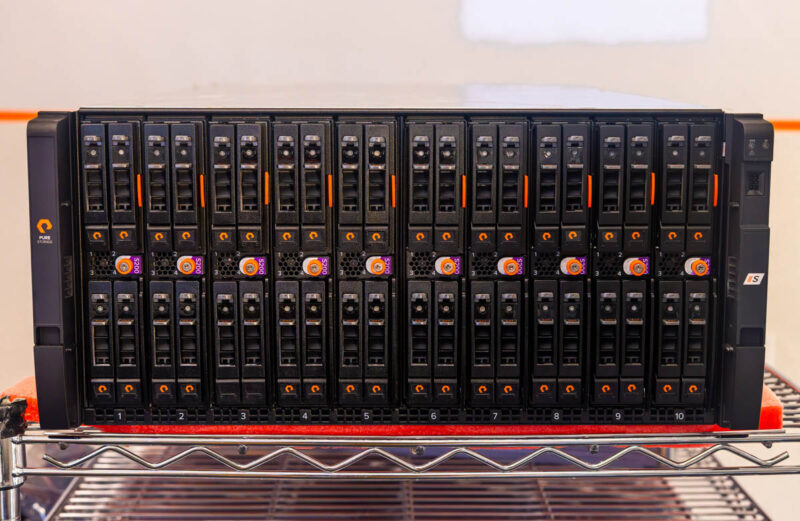
We get to see so much cool hardware at STH, but this was probably the coolest storage solution we saw that year. Hopefully, folks enjoy the quick look inside a high-end all-flash storage array.



Hi Patrick,
which protocols are supported NFS,SMB or is directly RAW? I look for a Netapp replacement but the most are struggling with deduplication. ZFS/IX was not an option, I talked with IX so far.
FlashBlade supports. NFS, SMB and even S3 through Ethernet and IP connectivity
Comparison to Vast storage options would be relevant.
I have spoken to the VAST folks about this. Timing is rough. They actually have a cool architecture using BlueField 1 (not 2) and AIC chassis that we have shown on STH.
Can you do Pure’s other arrays? I’m in love with your teardowns on gear like this. Pure’s so into the software, they need STH to satisfy everyone who just wants to know about the hardware. STH is the only place for that.
I have a FlashBlade S, actually like it. The hardware is far better than the original FlashBlade, and their support is fantastic as always. It won’t blow your socks off on single session transfer speeds (it’s still fast but limited to a single blade), but really shines in parallel performance. If you’re doing object storage these are great.
Is there a video for this content you made? Really like to see it more from performance perspective
I’ve been basically obsessed with pure since before flashblade despite having never touched one
there’s some awesome architecture talks recorded on YT from tech field day including some about design considerations for these, would recommend
I have always been impressed by Pure my former employer bought several back in 2013 or so on some of their early designs. At the time we were amazed that we could run benchmarks on 14 blades at once using 8Gb FC and that we still had difficulty maxing out the storage back then something like maybe 6GB/S I cant really remember and like 175K IOPS and it was killing our Netapp and other storage in every way…. course by todays standards that can be beat by a single NVME drive.. nuts to think about.
Just an update on dfm sizes. Pure has shipped 75tb dfms for almost 6 months and 150tb dfms will ship soon.